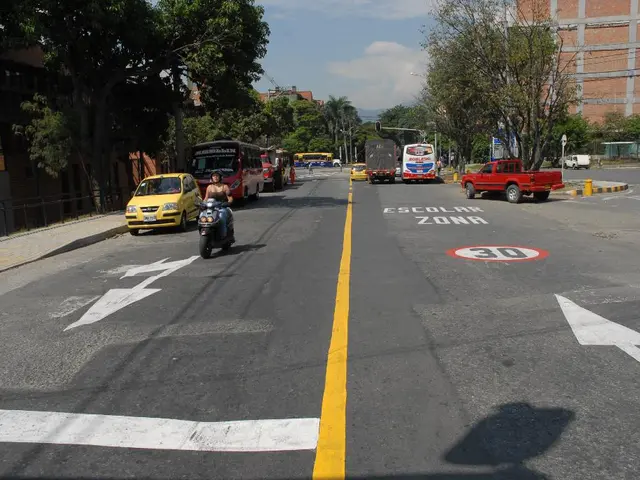Pablo Escobar's Legacy: Colombia's Tussle with Runaway Hippos
Back in the '80s, drug lord Pablo Escobar brought four African hippos to his swanky private zoo, Hacienda Napolés, in Colombia. At over a ton each, these hippos, originally intended for Escobar's menagerie of exotic animals like elephants, giraffes, and kangaroos, have since multiplied and become a nuisance to the South American nation. Today, the Colombian government is grappling with ways to manage their population and halt their ecological damage.
Environment Minister Susana Muhammad outlined the Environmental Ministry's three-pronged approach at a press conference: surgical sterilization, euthanasia, and relocation.
Hippos Threaten Colombia's Ecosystem
Escobar originally introduced the hippos to Colombia as part of his private zoo's diverse collection. After Escobar's death in 1993, the hippos managed to survive and multiply in the wild. By 2021, an estimated 160 of these animals were living around the Rio Magdalena, according to the Ministry.
The climate, abundant food sources, and lack of natural predators have allowed the hippos to thrive in their new environment. However, without proper management, their population threatens to surge beyond 1,000 by 2035, as warned by the Minister.
The unwelcome hippos disrupt the ecosystem, pollute water sources, and endanger local residents. Despite their appeal in tourism, they pose a constant risk of attack; even the calmest hippos can be unpredictable, with their massive weight capable of capsizing boats. Bio-scientist David Echeverri of the Cornare regional environmental office emphasizes the importance of caution.
Sterilization Alone Isn't Enough
Sterilization is one of the policies envisioned by the Environmental Ministry, despite the complexity and expense involved. However, the Minister acknowledged the risks associated with anesthetic reactions, death, and dangers to the sterilization team.
The cost of sterilizing one hippo averages around 9,000 euros: the Colombian government plans to sterilize 20 animals by the end of 2021 and 40 annually thereafter.
Beyond sterilization, relocation and euthanasia are also part of the plan. Discussions with Mexico, India, and the Philippines are underway, with India offering to accept 60 hippos.
Controversial Solutions from the Past
Efforts to control the population in the past have been far from successful. Shooting hippos, as suggested by researchers, is a controversial measure for animal-loving Colombians. public outcry was stirred when "Pepe," a stray hippo, was shot by the Ministry of the Environment in 2009, while soldiers posed with the dead animal.
Transporting hippos to Africa also has potential negative consequences. Biology professor María Ángela Echeverry from Javeriana University in Bogotá emphasizes the potential risks of spreading diseases when moving animals between continents.
A Race Against Time
With urgent concerns regarding biodiversity and public safety, the Colombian government is pushing to implement all three measures simultaneously. "None of these methods is effective on its own, but combined they can make a significant impact," Minister Muhammad noted. "We're in a race against time."
Colombia aims to control its invasive hippo population by combining surgical sterilization, relocation, and euthanasia. Critics argue that these methods are not always effective or humane.
Enrichment Data:
- Sterilization: Critics argue that sterilization is less effective on its own, and poses risks to both animals and veterinarians. Logistical challenges include the transportation costs associated with relocating hippos to other countries.
- Relocation: The success of relocation efforts is uncertain, and critics highlight ethical concerns regarding the suitability of new habitats for hippos.
- Euthanasia: Euthanization is a controversial tactic, with animal rights activists arguing that it is inhumane and unnecessary. Public outrage over controversial culling efforts in the past poses legal challenges.
- Overall Impact: The invasive hippo population poses a significant threat to the local ecosystem, disrupting habitats and putting native species and human safety at risk. Effective control measures are crucial to mitigating these impacts.






